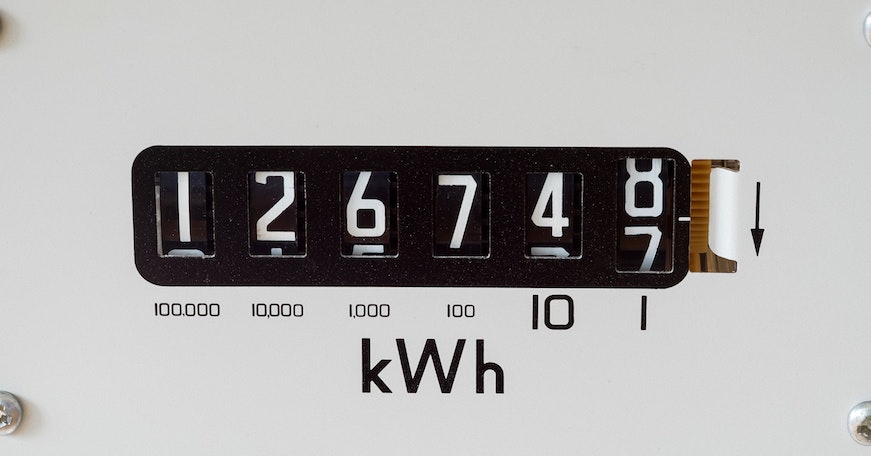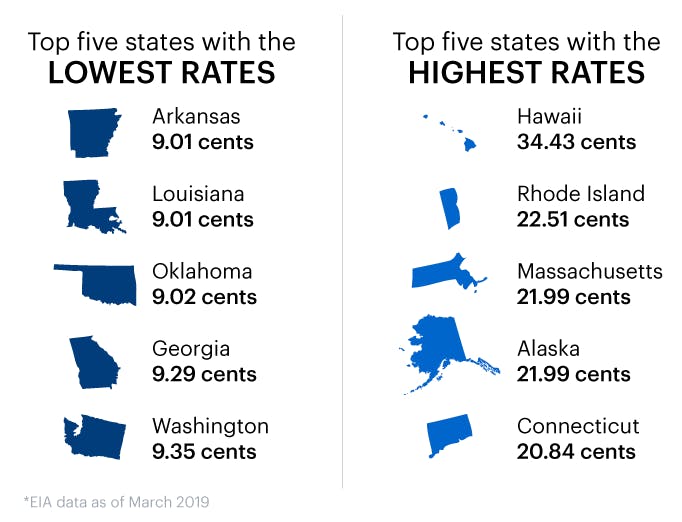Your guide to calculating home energy costs

Have you ever wondered how much it really cost to leave the TV on in the background as you slept? Or a fan running even when you aren’t home? Calculating energy consumption across your devices can be a helpful tool in tracking how individual energy usage is contributing to your bill at the end of the month. Breaking down your energy bill begins with kilowatt-hours (kWh), the measurement used to calculate the amount of energy you use over time.
The average price per kilowatt hour in the U.S. is 12.47 cents, a 0.2 percent increase from a year ago. But what you will pay specifically per one kilowatt-hour will ultimately depend on where you live.
How to calculate your kWh usage

The easiest way to calculate your energy usage is to review the energy label guides located on some of your appliances. This label provides an estimate of the average amount of energy consumed by that appliance, as well as how much it costs to operate that model. In the instances in which an appliance doesn’t have an energy label, a simple math equation can be used to calculate how much kWh your appliance uses daily.
Once you know the number of kWh used by your appliances, you can then determine how much you pay for it. If you live in Georgia, which charges 9.29 cents per kWh, you can determine that it will cost 9.29 cents a day to keep it on for 10 hours.

This same process can be used for every appliance in your home. Usually, you'll be able to find a label on the device showing the number of watts used. If not, you can always find out from the owner's manual.
For high energy spending appliances such as your washing machine and dryer, you need to take into account other factors when determining how much you pay per load. Money Crashers does a great job of showing the various ways you're charged when using hot-water, cold-water, lower costing detergent, line-drying, and energy efficient models.
If you’re not in the mood for math equations, there are two other alternatives you can use to calculate your energy usage:
- Electricity Usage Monitor
- Whole-House Energy Monitoring System
An electricity usage monitor measures the electricity usage of any device running on 120 volts or less. Appliances such as dryers and AC units that typically use 220 volts, will not work with an electricity usage monitor.
Using an electricity usage monitor is pretty simple in itself. Once you've purchased the item (which typically retail between $25-$50) all you need to do is plug the monitor into the electrical outlet your appliance uses, and then plug the appliance into the monitor. The monitor will then show you how many watts your device uses, plus it'll show you the number of kWh used in an hour, day, or even longer, as long as you leave everything set up.
Whole-House energy monitoring systems, give you the ability to get a more detailed analysis on your home's energy use, including those appliances that run at 240 volts. This type of monitor is typically installed into the main breaker panel of your home, meaning you'll need an electrician to install it for you. Once installed, you'll have a complete view of your energy habits, including details as to when and where you use the most energy within your home.
The beauty behind using energy monitor systems is that they can also identify vampire power, or in other words, standby power. Unfortunately, some of our appliances still consume energy, even after we're done using them. TVs, microwaves, and cell phone chargers are just some examples of devices where energy consumption continues after they're no longer in use. According to our blog "Vampire power sources: The likely culprit of your high power bill,” the United States uses approximately 26 percent of the world’s power. Of that 26 percent, 5 percent of it is useless vampire power. This wasted energy could power all of Italy.
It's important to keep that in mind the next time you leave something running unnecessarily. If you stay on top of your energy consumption habits, and consistently monitor your kWh usage, you'll be able to save a nice amount on your next electricity bill, and you'll be lessening your carbon footprint – a win-win for your wallet and the planet.
